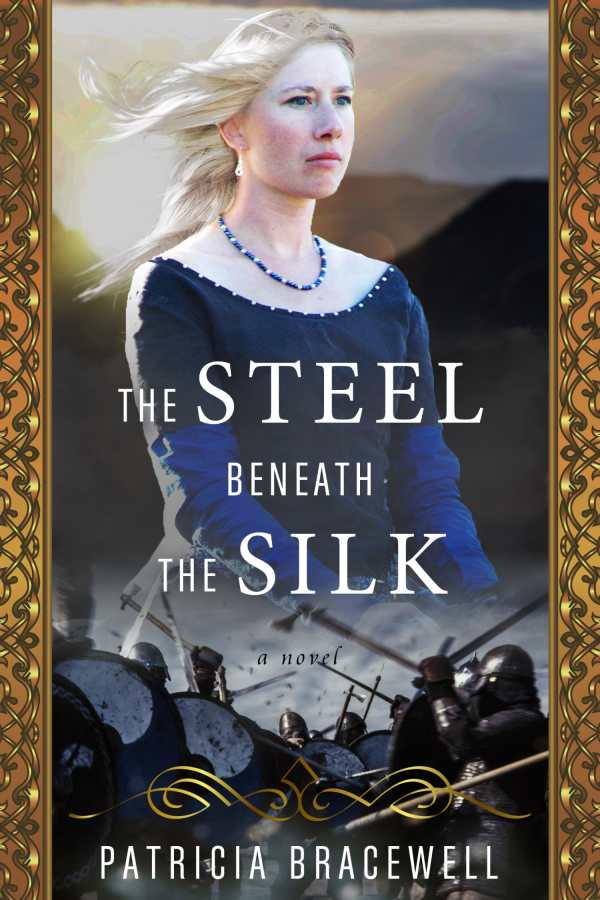The Steel Beneath the Silk
The historical novel The Steel Beneath the Silk brings Emma of Normandy to life with authentic details and timeless themes around women’s autonomy.
Set in eleventh-century England, Patricia Bracewell’s The Steel Beneath the Silk is a novel of political and romantic intrigue centered on Emma of Normandy, one of England’s early medieval queens.
As the novel opens, Emma has been married to aging King Æthelred for more years than she’d like, and their marriage is beset with difficulties. Emma wishes to serve England in a more significant capacity than her husband allows, and she chafes at her figurehead status. Emma also wants to protect her children, but her husband insists that they be fostered out to other powerful noble families to cement alliances. Their marriage is further complicated by a mutual attraction between Emma and Athelstan, King Æthelred’s adult son from an earlier marriage.
Emma struggles to exercise power over her own fate and the fates of her children in a world where women’s obedience to men is required; this is the novel’s central conflict. Though forced to play a compliant role, she makes the best of her circumstances by employing her intelligence and good nature when unexpected opportunities arise.
Ample historical details regarding military campaigns, royal lineage, built environments, and political institutions help to construct a picture of medieval England in turmoil, when it was subject to repeated invasions by Viking forces. On a more intimate scale, the particulars of the era, including mentions of tafl, a popular board game, enliven the characters’ interactions; a series of Emma’s negotiations take place over the course of such games.
Emma is constructed most through her thoughts, showing how her public role is separate from her personal identity. It’s a dichotomy that she accepts. Details about the food she tastes, the fabrics touching her skin, and the odors she encounters are sources of physical context for her internal monologues. Her more disembodied thoughts are less genuine; her cerebral passion for Athelstan, for example, is overshadowed by more tangible scenes of their staid public interactions.
The book’s secondary characters are dimensionless, with the exception of morally ambiguous Elgiva, who serves as a foil to more virtuous Emma. Elgiva, who’s married to a Danish leader, sees herself as competing for power with Emma; she is also developed through her internal thoughts. Unlike Emma, Elgiva is not skilled in compartmentalizing, though, and often acts on impulse.
As it moves between history and storytelling, the book wobbles. Too much space is devoted to events Emma never learns of and that don’t affect her, as when the king’s belief that he’s haunted by the ghost of his brother diverts energy from Emma’s quest for self-determination. The murders of several peripheral characters are also distracting.
Written in fluid, if formal, prose, the story is energized by its oppositions: Emma’s internal life versus her external life, the binary gender roles imposed on men and women, and the costs of wielding power and being deprived of it. Emma is complex and engaging; her natural optimism serves her desires for stability, even as it sometimes leads her to disappointments.
The Steel Beneath the Silk brings Emma of Normandy to life with authentic early-medieval details while exploring timeless themes of women’s autonomy.
Reviewed by
Michele Sharpe
Disclosure: This article is not an endorsement, but a review. The publisher of this book provided free copies of the book and paid a small fee to have their book reviewed by a professional reviewer. Foreword Reviews and Clarion Reviews make no guarantee that the publisher will receive a positive review. Foreword Magazine, Inc. is disclosing this in accordance with the Federal Trade Commission’s 16 CFR, Part 255.

